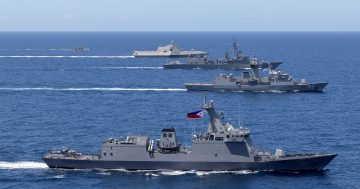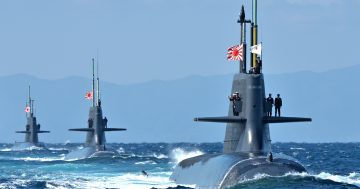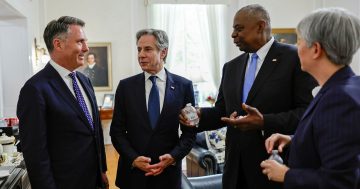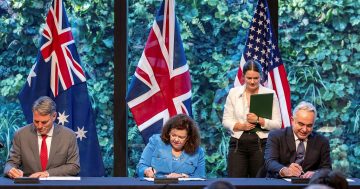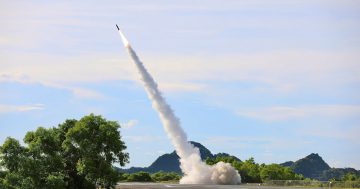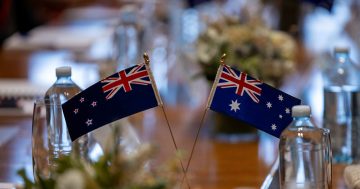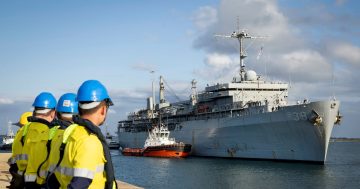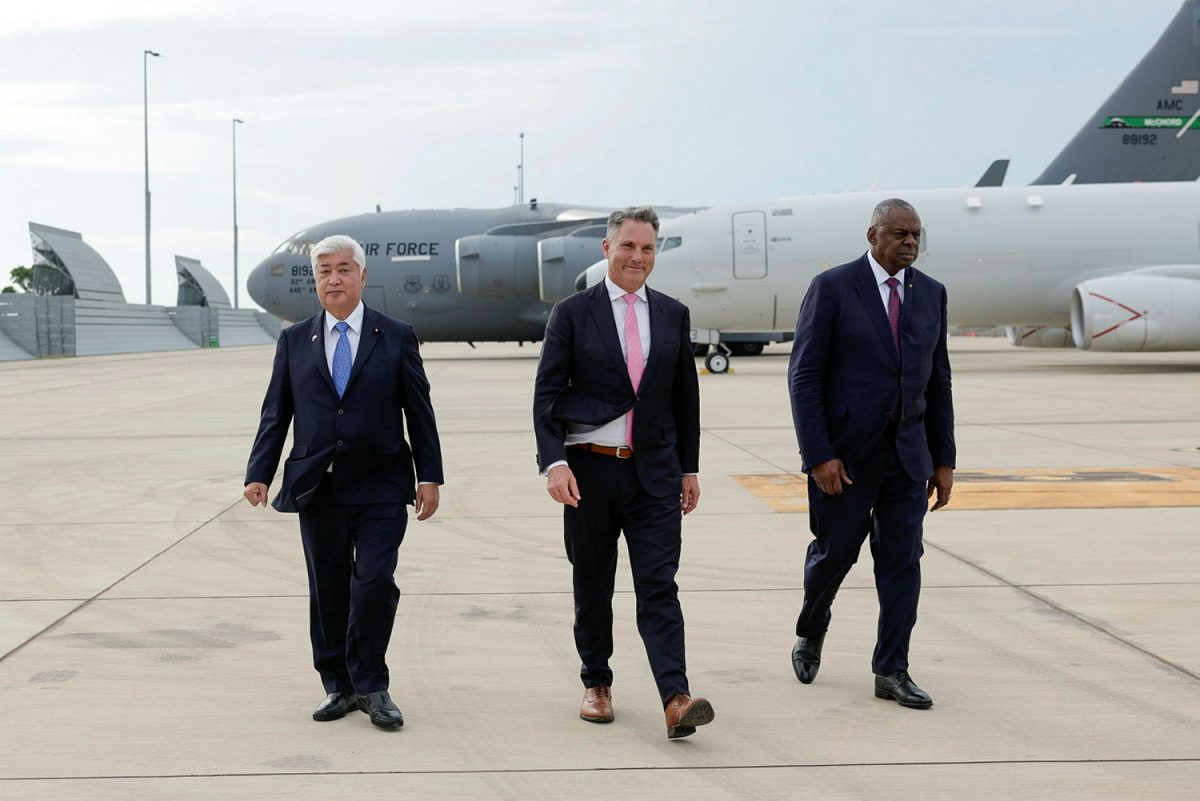
Japanese Minister of Defense Nakatani Gen, Australian Defence Minister Richard Marles, and US Secretary of Defense Lloyd Austin III at RAAF Base Darwin on 17 November ahead of the Trilateral Defence Ministers’ Meeting. Photo: ADF.
Acting Prime Minister and Defence Minister Richard Marles and his Japanese and US counterparts have used a trilateral meeting in Darwin on the weekend to strengthen defence ties between the three countries.
Meeting with Japanese Minister of Defense Nakatani Gen, and United States Secretary of Defense Lloyd Austin III on 17 November, Mr Marles hosted the 14th Trilateral Defence Ministers’ Meeting.
“I am honoured to welcome Minister Nakatani and Secretary Austin for the first Trilateral Defence Ministers’ Meeting in Australia,” he said in Darwin.
“I look forward to discussing defence cooperation with two of our closest partners.
“The trilateral partnership between Australia, Japan and the United States is built upon our shared values, deep trust, and unbreakable commitment to the stability and security of the Indo-Pacific region. Our enduring partnership is crucial to collective deterrence in our region.”
In a joint statement, the leaders said they agreed to expand defence cooperation between the three nations in the region.
They said part of that commitment to regional stability would see the additional trilateral policy coordination and consultation on regional security issues and contingencies, and the better alignment of policy and operational objectives of their forces from peacetime to contingency.
Part of that included an expansion of the reciprocal access agreement with the US to include Japan, which will allow the forces of each country to deploy to and operate from each other’s bases.
To that end, there will be increased Japanese participation in existing Australia-United States force posture cooperation activities, including annual trilateral amphibious training by the Japan Ground Self‑Defense Force’s (JGSDF) Amphibious Rapid Deployment Brigade with the Australian Defence Force (ADF) and the US Marine Rotational Force – Darwin (MRF-D).
Japan will participate in the high-end Exercises Southern Jackaroo and Talisman Sabre in Australia in 2025, while the ADF will participate in Japan’s Exercises Orient Shield, Yama Sakura, Keen Edge, and Keen Sword in 2025.
In addition, the three partners say they will grow their intelligence, surveillance, and reconnaissance (ISR) cooperation in the Indo-Pacific region as a priority, including Australian personnel’s participation in the Japan-United States Bilateral Information Analysis Cell (BIAC).
Other commitments include expanded cooperation under the trilateral Research, Development, Test and Evaluation (RDT&E) Projects Arrangement, including on composite aerospace materials and autonomous systems, and the progress of discussion in the area of collaborative combat aircraft and autonomy and commitment to find cooperative opportunities in this area.
Cooperation on a networked air and missile defence architecture to counter the growing range of threats throughout the Indo-Pacific was also discussed, as was progress on Japan’s consultation with AUKUS partners under AUKUS Pillar II, with the initial focus to improve interoperability with Japan’s maritime autonomous systems.
Of course, China and its rapidly growing military and regional belligerence was front of mind in the forging of these closer ties.
“We reiterate our serious concern about destabilising actions in the East and South China seas, including dangerous conduct by the People’s Republic of China (PRC) against Philippines and other coastal state vessels,” the joint statement reads.
“We reiterate our strong opposition to any unilateral attempts to change the status quo by force or coercion. It is important that all states are free to exercise rights and freedoms consistent with international law, particularly the United Nations Convention on the Law of the Sea, including freedom of navigation and overflight and other lawful uses of the sea.
“We reaffirm the need for all states to pursue the peaceful resolution of disputes in accordance with international law and that the 2016 South China Sea Arbitral Award is final and legally binding upon the parties to those proceedings,” it adds.
“We emphasise the importance of peace and stability across the Taiwan Strait and call for the peaceful resolution of cross-Strait issues.”
But a scathing piece in China’s Global Times newspaper on Tuesday (19 November) labelled the perceived Chinese threat as “imaginary”.
“These drills are designed to counter an imaginary China threat,” it reads. “The US and paid mouthpieces such as ASPI (Australian Strategic Policy Institute) have manufactured a threat that doesn’t exist, only to put Australia into a very dangerous position because, if there is conflict in Asia, it won’t be the US getting hit, it will be bases in Australia, some of which are very close to civilian populations.”


